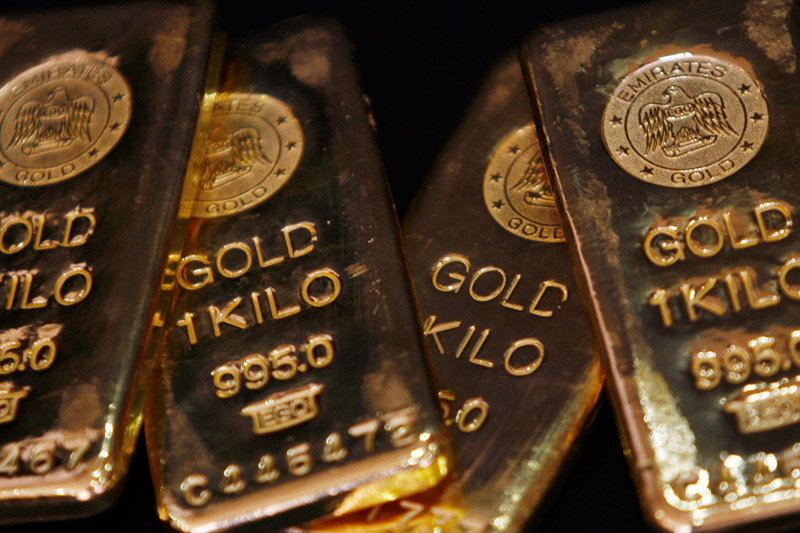Investing.com - Gold prices edged lower on Wednesday, as the U.S. dollar recovered some ground lost after a weaker-than-expected U.S. retail sales report on Tuesday.
On the Comex division of the New York Mercantile Exchange, gold futures for June delivery shed $3.50, or 0.29%, to trade at $1,189.00 a troy ounce during European morning hours.
A day earlier, gold touched $1,183.50, a level not seen since April 1, before ending at $1,192.60, down $6.70, or 0.56%.
Futures were likely to find support at $1,180.50, the low from April 1, and resistance at $1,209.30, the high from April 13.
The dollar index, which measures the greenback’s strength against a trade-weighted basket of six major currencies, was up 0.45% to trade at 99.45 early on Wednesday after hitting a low of 98.58 on Tuesday.
The greenback regained some ground lost after the U.S. Commerce Department reported on Tuesday that retail sales rose 0.9% last month, disappointing expectations for a gain of 1.0%.
The data fuelled speculation that the Federal Reserve could delay hiking interest rates until late 2015, instead of tightening midyear.
Investors looked ahead to U.S. industrial production data later in the session for further indications on the strength of the economy and the timing of an interest rate hike.
Elsewhere on the Comex, silver futures for May delivery shed 9.3 cents, or 0.58%, to trade at $16.06 a troy ounce, while copper for May delivery dipped 0.7 cents, or 0.28%, to trade at $2.693 a pound.
Official data released earlier showed that China’s economy grew 7.0% in the first quarter, in line with forecasts and down from growth of 7.3% in the preceding quarter. It was the slowest pace of growth since the global financial crisis in 2008.
A separate report showed that industrial production rose by an annualized rate of 5.6% in March, below expectations for a 6.9% increase and following a gain of 6.8% in the preceding month.
Data on retail sales and fixed asset investment also fell short of forecasts, indicating that China needs to act to prevent a further slowdown in the economy.
The Asian nation is the world’s largest copper consumer, accounting for almost 40% of world consumption.
